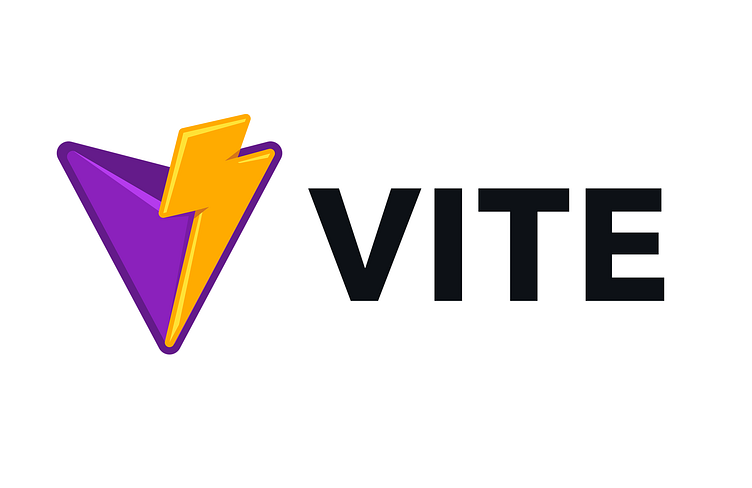The world of web development is in a constant state of flux, with tools and frameworks evolving at a breakneck pace. For years, bundlers like webpack were the undisputed champions, transforming our complex web of modules, assets, and dependencies into browser-ready files. However, this process often came with a significant cost: long wait times for development servers to start and slow updates during hot reloading. This friction in the developer experience has paved the way for a new generation of tooling. Enter Vite, a build tool that has rapidly gained immense popularity and is fundamentally changing how we think about frontend development.
Created by Evan You, the mind behind Vue.js, Vite (French for “fast,” pronounced /vit/) isn’t just another bundler. It’s a paradigm shift. By leveraging native browser features and modern JavaScript tooling, Vite offers a development experience that is an order of magnitude faster than its predecessors. This performance leap is a major driver behind the latest Vite News and its adoption as the default build tool for frameworks like Vue.js and SvelteKit, and a top choice for developers working with React, SolidJS, and more. This article provides a comprehensive technical exploration of Vite, diving into its core architecture, practical implementation, advanced features, and its place in the ever-evolving landscape of web tooling, which includes everything from Webpack News to the rise of Rust-based tools like Turbopack.
Understanding Vite’s Core Architecture: Speed by Design
Vite’s incredible speed isn’t magic; it’s the result of a clever architecture that challenges the traditional bundling-first approach. It strategically splits the workload between development and production, optimizing for the unique needs of each environment.
Leveraging Native ES Modules (ESM) in Development
The single most significant innovation in Vite is its use of native ES Modules (ESM) during development. For years, bundlers like webpack, Rollup, and Parcel had to process and bundle your entire application’s source code before a development server could even start. If you had a large application, this could mean waiting minutes. On every file change, the bundle would be partially or fully rebuilt, leading to noticeable delays in Hot Module Replacement (HMR).
Vite turns this model on its head. Modern browsers can understand import and export statements natively. Vite leverages this by serving your source files directly to the browser. When the browser requests a module (e.g., main.js), it makes HTTP requests for its imports (e.g., App.jsx, utils.js), and so on. Vite’s dev server intercepts these requests and serves the files on demand, performing minimal transformations. This means:
- Instant Server Start: There’s no initial bundling. The server is ready almost immediately.
- Lightning-Fast HMR: When you edit a file, Vite only needs to transform and serve that single module. It doesn’t need to rebuild a bundle, making updates feel instantaneous, regardless of your application’s size.
Pre-Bundling Dependencies with esbuild
While serving source code via native ESM is efficient, handling dependencies from node_modules can be problematic. These dependencies are often shipped as CommonJS modules, can consist of hundreds of small files, and are not optimized for browser delivery. To solve this, Vite uses esbuild, an extremely fast bundler written in Go. On the first server start, Vite pre-bundles your dependencies into a few optimized ESM files. This one-time process is incredibly fast and provides two key benefits:
- Compatibility: It converts CommonJS and UMD modules to ESM.
- Performance: It merges many small dependency files into single, larger modules, reducing the number of HTTP requests the browser needs to make.
This pre-bundling step is a crucial part of Vite’s performance story, combining the speed of a Go-based tool with the on-demand nature of its native ESM dev server.

# Scaffolding a new Vite project is simple and fast.
# This command lets you choose from various templates, including React, Vue, Svelte, and more.
npm create vite@latest my-vite-app -- --template react-ts
# Navigate into your new project
cd my-vite-app
# Install dependencies
npm install
# Start the lightning-fast dev server
npm run devPutting Vite into Practice: From Scaffolding to Configuration
Getting started with Vite is remarkably straightforward, but its true power lies in its flexible and intuitive configuration. The central hub for this is the vite.config.js (or .ts) file at the root of your project.
The Anatomy of `vite.config.js`
Vite’s configuration file is designed to be minimal and developer-friendly. It uses an ESM syntax and exposes a defineConfig helper for excellent autocompletion and type-checking in modern editors. A typical configuration file for a React project might involve setting up plugins, defining server options, and customizing the build process.
For instance, a common requirement during development is to proxy API requests to a backend server to avoid CORS issues. Vite makes this incredibly simple. You can also define aliases for cleaner import paths, which is a huge quality-of-life improvement in large codebases.
import { defineConfig } from 'vite';
import react from '@vitejs/plugin-react';
import path from 'path';
// https://vitejs.dev/config/
export default defineConfig({
// Plugins extend Vite's functionality. @vitejs/plugin-react enables React Fast Refresh (HMR).
plugins: [react()],
// Configure the development server
server: {
port: 3000,
// Proxy API requests to a backend running on port 8080
proxy: {
'/api': {
target: 'http://localhost:8080',
changeOrigin: true, // Needed for virtual hosted sites
secure: false,
rewrite: (path) => path.replace(/^\/api/, ''),
},
},
},
// Define path aliases for cleaner imports
resolve: {
alias: {
'@': path.resolve(__dirname, './src'),
},
},
// Customize the production build
build: {
outDir: 'dist',
sourcemap: true, // Generate source maps for debugging
},
});The Rich Plugin Ecosystem
Vite’s core is lean, with much of its functionality provided by a rich plugin ecosystem. These plugins are built on a Rollup-compatible API, making them powerful and versatile. Whether you’re working with Vue.js News, Svelte News, or React News, there’s an official plugin to provide the best possible integration. Beyond framework support, plugins exist for everything from image optimization and SVG handling to integrating with tools like ESLint or providing visual analysis of your production bundle. This extensibility is key to Vite’s ability to adapt to nearly any project’s needs, from a simple static site to a complex application powered by frameworks like Next.js or Nuxt.js.
Advanced Vite Techniques for Modern Web Applications
While Vite excels at building client-side Single Page Applications (SPAs), its capabilities extend far beyond that. It has first-class support for advanced patterns like Server-Side Rendering (SSR) and handles environment variables with ease.
First-Class Server-Side Rendering (SSR) Support
SSR is critical for performance and SEO in many modern applications. Frameworks like Next.js News, Nuxt.js News, and Remix News have popularized this approach. Vite provides low-level APIs to enable efficient SSR. It handles module loading on the server (using Node.js or other runtimes like Deno News or Bun News) and provides HMR for your server code during development. This allows you to build full-stack applications with a unified and fast development experience. The core idea is to create a server entry point that renders your application to an HTML string, which can then be served to the client.

// A simplified example of an SSR server entry file (e.g., entry-server.jsx)
import React from 'react';
import ReactDOMServer from 'react-dom/server';
import { StaticRouter } from 'react-router-dom/server';
import { App } from './App';
export function render(url) {
// Use a router that works on the server
const html = ReactDOMServer.renderToString(
<React.StrictMode>
<StaticRouter location={url}>
<App />
</StaticRouter>
</React.StrictMode>
);
return { html };
}Managing Environment Variables and Modes
Real-world applications need to manage different configurations for development, staging, and production. Vite has built-in support for this using .env files. It loads variables from files like .env, .env.local, and .env.[mode] (e.g., .env.production). To prevent accidentally leaking server-side keys to the client, Vite only exposes variables prefixed with VITE_. These are accessible in your client-side code via the special import.meta.env object.
This secure and intuitive system simplifies managing API keys, feature flags, and other environment-specific settings without complex setup, a common pain point with older tooling like webpack.
Optimizing Your Workflow: Best Practices and the Vite Ecosystem
Adopting Vite is the first step; mastering it involves understanding its ecosystem and optimization strategies. From testing to production builds, Vite offers modern solutions that integrate seamlessly into its core philosophy of speed and developer experience.
Performance Tuning and Code Splitting
For production builds, Vite uses Rollup, a mature and highly-optimized bundler known for its efficient tree-shaking and code-splitting capabilities. Vite automatically splits your code into logical chunks. You can further optimize this by using dynamic imports for route-based or component-based lazy loading. This ensures that users only download the code they need for the initial page load, dramatically improving performance.

import React, { Suspense } from 'react';
// Lazily import a component. Vite will automatically create a separate chunk for it.
const AdminDashboard = React.lazy(() => import('./pages/AdminDashboard'));
function App() {
// Assume some logic to determine if the user is an admin
const isAdmin = true;
return (
<div>
<h1>Main Application</h1>
{isAdmin && (
<Suspense fallback={<div>Loading Dashboard...</div>}>
<AdminDashboard />
</Suspense>
)}
</div>
);
}
export default App;Next-Generation Testing with Vitest
The innovation doesn’t stop at building. The Vitest News has been a game-changer for testing in the JavaScript world. Vitest is a testing framework built on top of Vite. This tight integration means it shares the same configuration, transformers, and resolvers as your application. The benefits are enormous:
- Unified Configuration: No more separate configs for Jest or Mocha. Your
vite.config.jsis the single source of truth. - Blazing Speed: It uses Vite’s on-demand architecture for instant test runs and a lightning-fast watch mode.
- Modern Features: It offers a Jest-compatible API, making migration easy, while also providing modern ESM-first support out of the box.
This synergy makes Vitest the natural choice for testing Vite applications, offering a developer experience that aligns perfectly with Vite’s own, a stark contrast to the often complex setup required for tools like Jest News or Cypress News in a bundled environment.
// Example test file: components/Button.test.jsx
import { describe, it, expect } from 'vitest';
import { render, screen } from '@testing-library/react';
import Button from './Button';
describe('Button Component', () => {
it('should render with the correct text', () => {
render(<Button>Click Me</Button>);
// Use testing-library to find the button
const buttonElement = screen.getByText(/Click Me/i);
expect(buttonElement).toBeInTheDocument();
});
});Conclusion: The Future of Frontend Tooling is Here
Vite represents a significant milestone in the evolution of web development tooling. By rethinking the development process from the ground up and leveraging modern browser capabilities, it has solved some of the most persistent pain points developers have faced for years. Its near-instant server starts and HMR have set a new standard for developer experience, while its use of Rollup for production ensures that final builds are as optimized as ever.
The rapid adoption of Vite across the ecosystem—from Node.js News to the latest trends in TypeScript News—is a testament to its effectiveness. It has simplified complex configurations, unified the development and testing experience with Vitest, and empowered developers to build faster and more efficiently. Whether you are starting a new project or looking to migrate an existing one, Vite is no longer just an alternative; for many, it has become the definitive choice for modern, high-performance web development.

